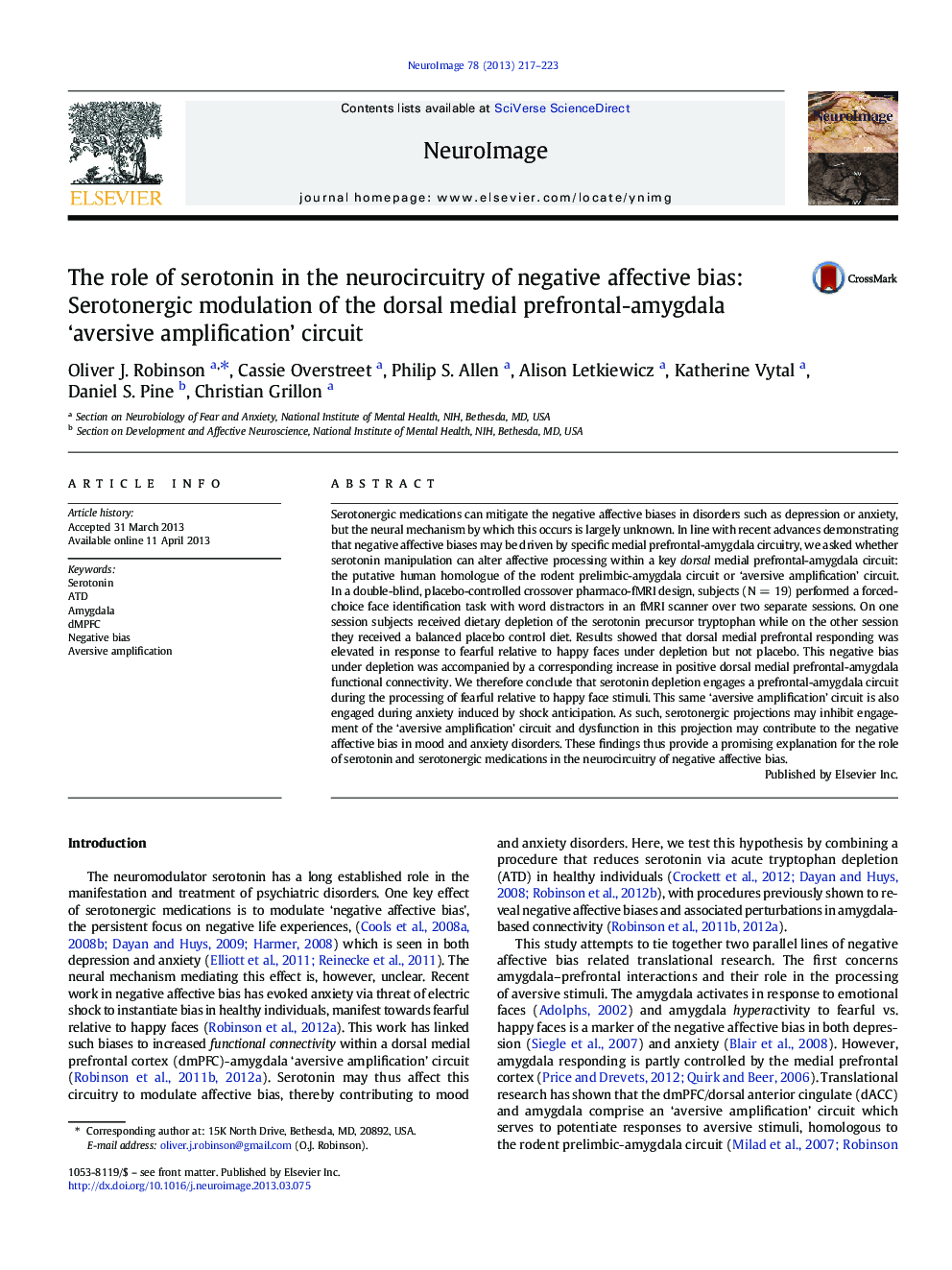| کد مقاله | کد نشریه | سال انتشار | مقاله انگلیسی | نسخه تمام متن |
|---|---|---|---|---|
| 6029229 | 1580926 | 2013 | 7 صفحه PDF | دانلود رایگان |
- Greater dmPFC-amygdala circuit response to aversive stimuli leads to negative bias.
- Serotonin (5-HT) can modulate aversive responding but neurocircuitry is unclear.
- We depleted 5-HT in subjects completing a dmPFC-amygdala recruiting task.
- 5-HT reduction increased response of dmPFC-amygdala circuit to aversive stimuli.
- Negative bias may be the result of 5-HT disinhibition in depression and anxiety.
Serotonergic medications can mitigate the negative affective biases in disorders such as depression or anxiety, but the neural mechanism by which this occurs is largely unknown. In line with recent advances demonstrating that negative affective biases may be driven by specific medial prefrontal-amygdala circuitry, we asked whether serotonin manipulation can alter affective processing within a key dorsal medial prefrontal-amygdala circuit: the putative human homologue of the rodent prelimbic-amygdala circuit or 'aversive amplification' circuit. In a double-blind, placebo-controlled crossover pharmaco-fMRI design, subjects (NÂ =Â 19) performed a forced-choice face identification task with word distractors in an fMRI scanner over two separate sessions. On one session subjects received dietary depletion of the serotonin precursor tryptophan while on the other session they received a balanced placebo control diet. Results showed that dorsal medial prefrontal responding was elevated in response to fearful relative to happy faces under depletion but not placebo. This negative bias under depletion was accompanied by a corresponding increase in positive dorsal medial prefrontal-amygdala functional connectivity. We therefore conclude that serotonin depletion engages a prefrontal-amygdala circuit during the processing of fearful relative to happy face stimuli. This same 'aversive amplification' circuit is also engaged during anxiety induced by shock anticipation. As such, serotonergic projections may inhibit engagement of the 'aversive amplification' circuit and dysfunction in this projection may contribute to the negative affective bias in mood and anxiety disorders. These findings thus provide a promising explanation for the role of serotonin and serotonergic medications in the neurocircuitry of negative affective bias.
Journal: NeuroImage - Volume 78, September 2013, Pages 217-223
